Do-it-yourself ventilation of the cellar in the garage: installation methods and procedures + useful tips for arranging
When arranging the basement, priority is given to the microclimate. The safety of products, the service life of racks, shelves, and the condition of the entire basement depend on how the ventilation of the cellar in the garage works.
To properly make ventilation, it is enough to follow the simple requirements to ensure reliable air circulation. In the article we will talk about the basic principles of building ventilation in a garage with a basement with our own hands. Consider the possible options for its arrangement, the nuances and ways to improve air exhaust.
The content of the article:
Purpose of ventilation in the basement of the garage
Underground rooms have an important property - temperature stability due to the low thermal conductivity of the soil. Due to this, cellars are widely used for storing vegetables, fruits, and canned foods. But underground factors and associated with increased humidity are also manifested.
To combat moisture and its consequences, ventilation is used in the basement of the garage, the purpose of which is as follows:
- provides the influx of cold air from the outside and the outflow from the cellar of warm, saturated with moisture, toxic impurities;
- helps maintain a lower basement temperature in the cold season;
- prevents corrosion of metal structures, car body, mold, mildew;
- increases the shelf life of products.
In addition, in the garage there are vapors of technical fluids, exhaust, toxic gases released during welding and metal cutting. All of them have strong penetration.
With insufficient ventilation in the garage and in the cellar, all these harmful substances can get into the basement, absorbed by the products stored there. To eliminate the risk of poisoning, it is necessary to periodically check the reliability of the hood.
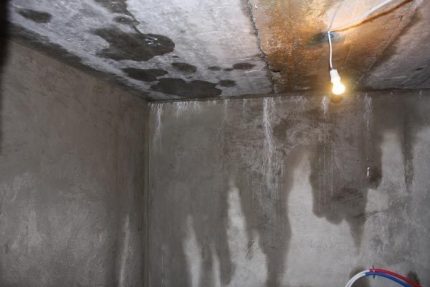
Features of the construction of ventilation systems
The circulation of air in the cellar of the garage can occur in two ways: due to thermal convection, or mechanical movement of air. Depending on this, distinguish between natural and forced ventilation.
Option # 1 - Natural Ventilation
First, let's figure out how to make natural ventilation in the basement of the garage, to ensure that the room is dry, preventing the occurrence of fungus and mold.

One of the main conditions for natural air circulation is the temperature difference inside the cellar and outside the garage.
The device of such a system is quite simple, consists of 2 pipes. One serves for the influx of cold air from the street, the other is the evacuation of warm from the basement.
Since cold air has a higher density and is heavier than warm, the supply pipe is lowered to the very bottom of the basement, closer to the floor. The exhaust inlet, on the contrary, is placed under the ceiling itself. This allows cold air to naturally displace waste - warmer and lighter, saturated with water vapor and other gases.
But in order for the natural circulation to work reliably, it is necessary to fulfill another important condition: to ensure a sufficient pressure difference inside the exhaust pipe and outside with a minimum temperature difference. The higher and longer it is, the greater the volume of light warm air in the pipe, the greater the buoyancy force acting on this volume.
For this reason, the exhaust pipe is installed as high as possible. This buoyancy determines the traction and efficiency of the entire system.
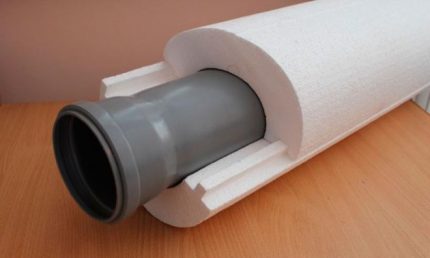
Based on the foregoing, the natural ventilation device in the cellar under the garage is made according to the following principles:
- to cover the entire volume of the basement with air exchange, the supply pipe is located near the floor, and the exhaust pipe is diagonally under the ceiling;
- the diameters of the pipes for inflow and removal of air should be the same and are selected depending on the area of the basement - from 100 mm or more;
- the necessary pressure difference is ensured by installing a sufficiently long vertical exhaust pipe with a height of 3 m above the ground;
- to maintain the temperature difference, protect from condensate and ice the exhaust pipe is insulated.
To the material of manufacture ventilation pipes special requirements are not presented, except for resistance to corrosion, moisture and temperature difference. As a rule, it is plastic or asbestos cement.
Option # 2 - forced cellar ventilation
Adding to the natural system electric fan able to improve its effectiveness, regardless of the time of year.
Such ventilation is called forced or mechanical. It can be used for arranging the ventilation of a garage with a cellar and a viewing hole.
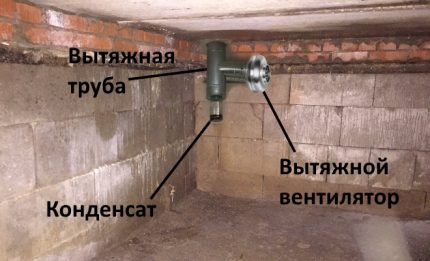
To build more efficient systems, fans are placed on both channels, which allows you to flexibly control the flow and exhaust of air, maintain the required microclimate.
We also recommend that you familiarize yourself with schemes of proper arrangement of ventilation in the cellar.
Advantages and disadvantages of ventilation systems
The choice of the type of ventilation system begins with a review of its positive and negative sides.Natural air exchange does not require complicated installation and high costs, does not consume energy, does not make noise.
The main disadvantage of such ventilation is its great dependence on seasonal temperature fluctuations. In the warm season, its effectiveness is close to zero. It does not allow to increase air circulation in adverse weather conditions.
The compulsory system is free from these shortcomings and has the ability to flexibly control the air flow. If necessary, you can install the fan not only on the exhaust duct, but also on the supply. You can adjust the air circulation manually, using programmable timers, or special control units that support the required microclimate.
The disadvantages of forced ventilation include: more complicated installation, less reliability due to the availability of additional devices, energy consumption, increased material costs.
Step-by-step installation instructions
Consider, for example, the installation sequence of a combined version of natural ventilation with an additional mechanical hood.
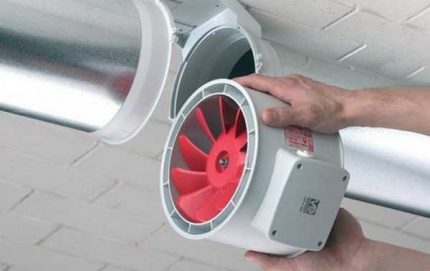
This will require pieces of plastic pipes with a diameter of 110 mm with rubber seals, a duct fan, built into the duct, 10-15 W with a power supply of 220 V.
The total length of the exhaust section is selected within 3 - 4 m, supply - depending on the depth of the basement and the distance to the exit of the perimeter of the garage. Also, two removable segments of 30 cm will be needed. One for the fan, the other for its replacement. If necessary, condensate drainage can be provided, then an additional tee and elbow are required. The latter is also used when turning the pipeline.
Of the tools you will need: a puncher, a drill, a chisel, a punch, a 125 mm crown for drilling holes in concrete. With a large thickness of the ceiling, the walls will need an extension cord.
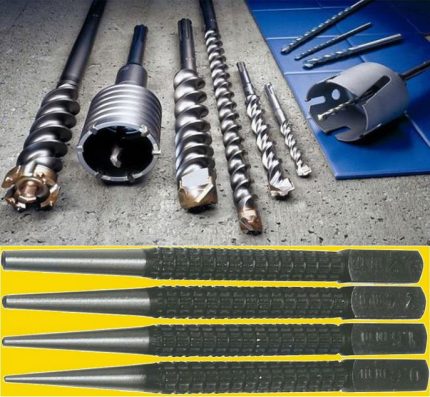
Arrangement of ventilation in the basement of the garage is carried out in two stages.
First, we make all the necessary holes in the concrete floors, brick walls inside the basement, garage and on the roof. Then we mount the pipes.
Stage # 1 - drilling holes
We adhere to the following sequence of actions:
- We determine the location of the openings of the supply and exhaust pipes in the basement. They should be located diagonally in different corners of the ceiling or the top of the wall. At the same time, the supply pipe should go to the north side of the garage, and the exhaust pipe to the roof, or to the south.
- From the basement we drill with a drill in the ceiling the center of the future openings for the hood.
- On the top, in the garage, mark a circle of 125 mm around the drilled center. We make several holes inside it with a drill. Then we drill with a crown. In case of contact with reinforcing rods, we free them from concrete with a chisel and cut off with a saber hacksaw for metal.
- We place the pipe vertically from the resulting hole in the floor to the ceiling, and note the position of its center. Drill a hole with a drill.
- On the roof of the garage, repeat step 3.
- Similarly, we make a hole for supplying air from the street to the basement, following paragraphs 2 and 3.
On this, the most laborious part of the work is completed.
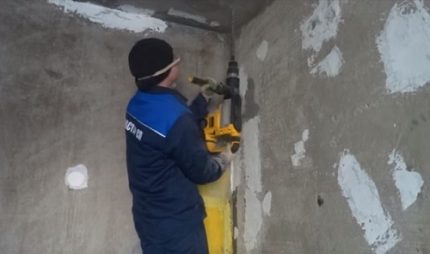
Stage # 2 - installation of pipes and fan
The next stage - the installation of pipes and the installation of the fan - is carried out in this order:
- We fix the fan inside one of the removable pipe sections.
- We mount an exhaust section in the garage, connecting three segments. The location of the fan is selected based on ease of access. The upper pipe should go at least a meter above the roof, the lower one - go into the cellar to the ceiling level. Between them we insert a piece of pipe with a fan, the rotation of which should be directed to the hood up.
- We install the supply pipe, lowering it into the cellar from 0.5 m to 0.2 m above the floor. The input part is displayed on the north side of the garage, lifting 20 cm above the ground. We finish the hole with a knee or tee with a protective metal mesh.
- We close up the joints of pipes with overlapping mortar or polyurethane foam.
- We connect the fan and check the draft in the basement, leaning a piece of paper against the exhaust hole.
- We insulate the pipe section above the roof with any available material. If the garage is not heated, then you need to insulate the entire exhaust pipe.
A fan may only be required in the summer months. The rest of the year, natural air circulation will suffice. To do this, you just need to replace the pipe fragment with the fan with the same segment without it.
The nuances of arranging ventilation
In severe frosts, an intense influx of cold air can lower the temperature in the basement to negative values.
To prevent this from happening, it is necessary to provide a valve (gate) with an electric actuator and in time to block the influx of cold air, and at temperatures below -15 degrees and the exhaust hood warm. It is also better not to place supplies in the immediate vicinity of the supply pipe, otherwise they may freeze.
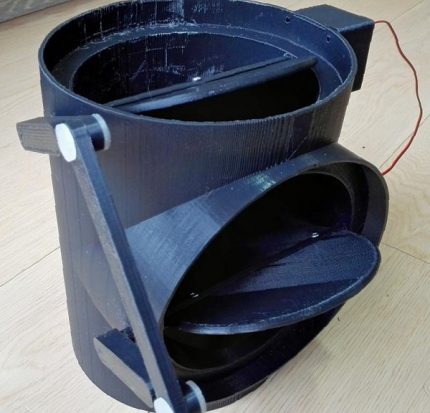
The performance of natural ventilation, among other factors, is also influenced by the cross section of the supply and exhaust openings. It is chosen depending on the size of the cellar. To see detailed calculations of the diameter of the ventilation tube for a cellar, please go to this link.
It is recommended to start the inlet of the supply pipe with a knee or tee to prevent rainwater from entering and cover it with a metal net from rodents, amphibians, insects.
To enhance traction and prevent its overlap by gusts of wind, it is recommended to set the end of the exhaust pipe deflector. In addition, it protects against precipitation and increases ventilation efficiency by 15 - 20%.
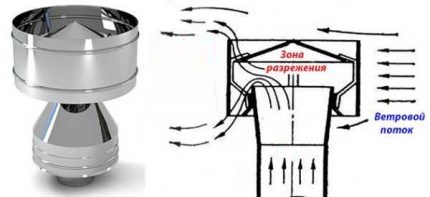
There is a wide variety of deflector types. From the simplest ones, in the form of an umbrella that you can make yourself, to rotating weathercocks and turbo deflectors.
In addition to maintaining a low temperature and removing excess moisture, the absence of light also affects the safety of products in the cellar. For this reason, there are no windows in the basement. This is also worth remembering when arranging electric lighting - light that is regularly forgotten to turn off can accelerate food spoilage.
Conclusions and useful video on the topic
Cellar ventilation option:
The use of baffles to enhance the hood in the basement and cellar of the garage:
Homemade Deflector Tests:
In conclusion, it is worth noting that the efforts and costs aimed at arranging ventilation in the basement of the garage will more than pay off in the future for the safety of products. Armed with the information and tools provided, the entire installation can be done with your own hands.
Are you just going to install ventilation in the cellar of the garage or improve the existing one and you still have questions that we did not consider in this article? Ask them to our experts and other site visitors - the contact form is located below.

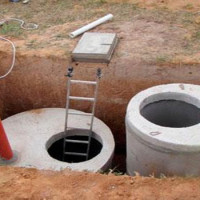 Ventilation of a septic tank in a private house: is it needed + tips for arranging
Ventilation of a septic tank in a private house: is it needed + tips for arranging 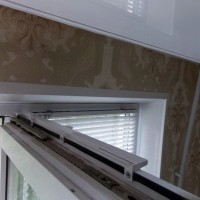 DIY inlet valve into a plastic window: manufacturing procedure and valve installation steps
DIY inlet valve into a plastic window: manufacturing procedure and valve installation steps 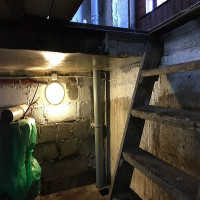 Ventilation of a vegetable pit in a garage: organization of air exchange in a garage vegetable store
Ventilation of a vegetable pit in a garage: organization of air exchange in a garage vegetable store 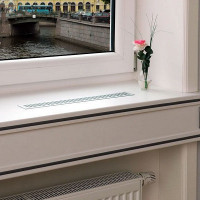 Window sill ventilation: methods and detailed instructions for arranging window sill ventilation
Window sill ventilation: methods and detailed instructions for arranging window sill ventilation  Basement ventilation in a private house: the best ways to arrange proper air exchange
Basement ventilation in a private house: the best ways to arrange proper air exchange  Inspection pit ventilation in a garage: specifics of arranging an air exchange system
Inspection pit ventilation in a garage: specifics of arranging an air exchange system  How much does it cost to connect gas to a private house: the price of organizing gas supply
How much does it cost to connect gas to a private house: the price of organizing gas supply  The best washing machines with dryer: model rating and customer tips
The best washing machines with dryer: model rating and customer tips  What is the color temperature of light and the nuances of choosing the temperature of the lamps to suit your needs
What is the color temperature of light and the nuances of choosing the temperature of the lamps to suit your needs  Replacement of a geyser in an apartment: replacement paperwork + basic norms and requirements
Replacement of a geyser in an apartment: replacement paperwork + basic norms and requirements